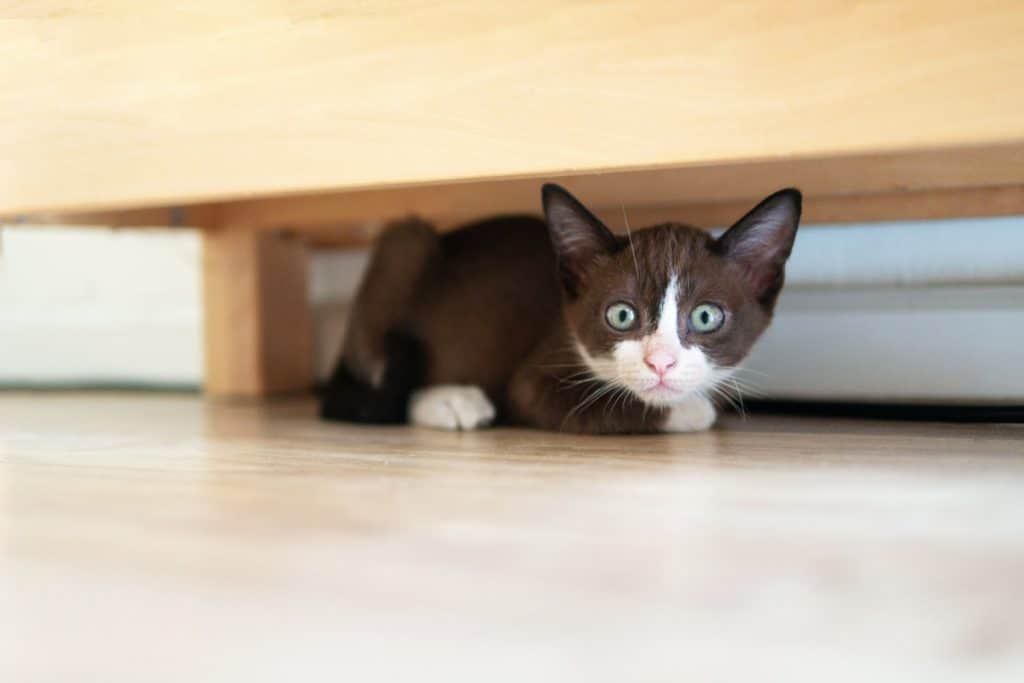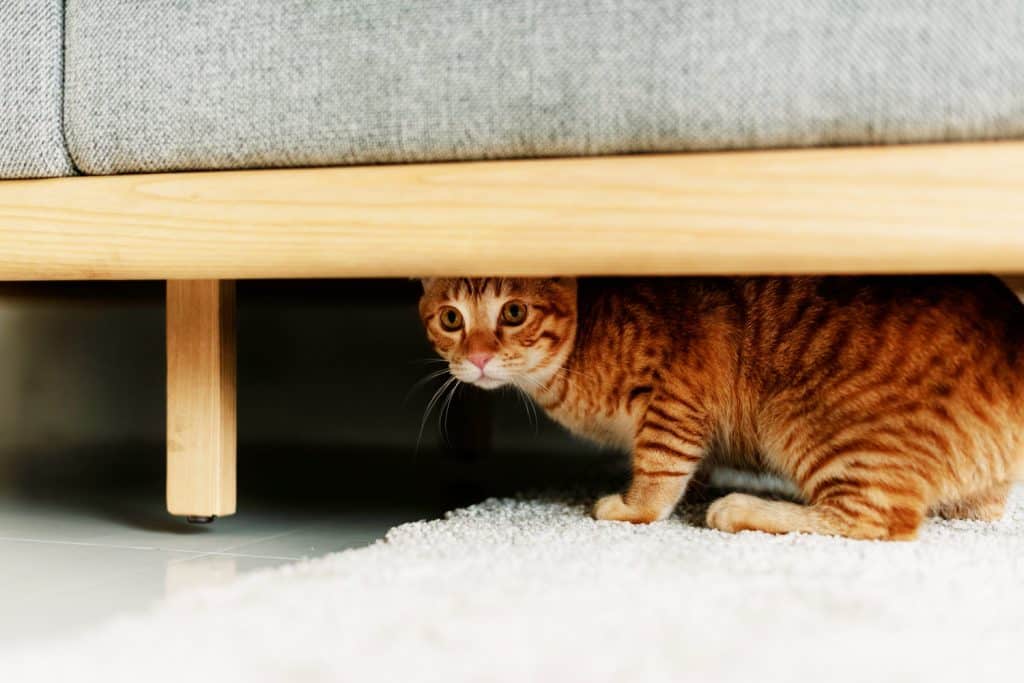We all love our cats and want them to be happy and healthy. But it can be hard to know if they're hurting because they can't tell us with words. Cats show they're in pain in other ways, but these can be hard to spot.
In this article, we're going to talk about how cats act when they're in pain. This will help you know what to look for to make sure your cat is okay.
Remember, getting to know your cat better will help you take better care of them. Let's learn more about how to keep our cats feeling good!

Your Cat's Silent Signals
Observing your cat's behavior provides crucial insights into its health.
If your cat has been acting differently, it might be signaling discomfort or pain. Here are a few behavioral changes to be aware of:
The Art Of Hiding As A Sign Of Pain
Cats often seek solitude when in pain. They're wired to hide their discomfort to evade potential predators. If your normally social cat starts avoiding interaction and hiding more, it could be a cause for concern.
The behavior varies between indoor and outdoor cats. An outdoor cat may hide out of reach, while an indoor cat might sneak away to a secluded spot in the house.
If your cat has been disappearing for extended periods, it might be time to investigate further.

Decreased Interaction And Appetite
Changes in how your cat interacts with toys, humans, or even food can be potential signs of discomfort. A playful cat turning away from its favorite toys or a food-loving cat ignoring its meals is worth noting.
An unexplained decrease in interaction can be a silent cry for help from your cat. Be alert to any changes in your cat's behavior toward its surroundings, toys, or food. Ignoring a favorite toy or showing less interest in meals might just be your cat's way of saying, "I need help."
Do Cats Conceal Their Pain?
Cats have a unique survival trait: they're excellent at hiding their pain. This inherent ability stems from their wild ancestors who needed to conceal weakness from potential predators.
But for us, their caregivers, this natural knack for secrecy makes detecting their discomfort a challenging task.
Behavioral Changes In Cats Experiencing Pain
Pain in cats often manifests as alterations in behavior. When your cat starts hiding more often, it's a sign worth noting.
An increased preference for solitude might be an indication that your cat is dealing with discomfort. It's crucial to be aware of these subtle changes.
Additionally, a shift in their usual activities can be a telltale sign. Is your cat suddenly less interactive with their favorite toy mouse or laser pointer? Or perhaps they're not seeking your lap for their regular nap. These changes might seem insignificant, but they could be your cat's silent plea for help.
Another key indicator is appetite. If your cat is leaving their food untouched or eating less than usual, it's a cause for concern. A decrease in appetite is often linked to various health issues, including pain.
By staying observant and understanding these signs, we can ensure our cats get the help they need when they need it.
Next Steps If Your Cat Shows Signs Of Pain
Identifying the signs of pain in your cat is only the first step towards ensuring their well-being. Recognizing these signs requires vigilance, understanding, and most importantly, action.
If you observe any behavioral changes that hint at discomfort or pain, such as increased hiding or decreased interaction, the next course of action is clear: consult a veterinarian.
As experts in animal health, veterinarians can diagnose and treat any underlying issues causing your cat's discomfort.
Remember, your vigilance and awareness as a cat owner are vital. You're not just a pet owner but also a guardian. Understanding your cat's behavior and responding appropriately can make a world of difference in their life.
Resources For Better Understanding Your Cat
While there's a wealth of knowledge to be found in your cat's behavior, it's always beneficial to tap into external resources as well. For further exploration into the world of cat health and behavior, consider visiting TheCatSite.com.
A hub for cat owners and enthusiasts, this site offers an array of articles and discussions revolving around cat health, behavior, and care.
Whether you're seeking advice on a specific issue or looking to expand your general understanding, online resources like this can be invaluable.

Prompt Action: The Key To Your Cat's Health
Taking care of our cats is something we love to do. They're more than just pets; they're part of our family. So, we want them to be healthy and happy.
Sometimes, small changes in how our cats act can tell us a lot about how they're feeling. They can't tell us if they're in pain, so they show us in other ways. It's important for us to notice these changes and understand what they mean.
If you think your cat is in pain or not feeling well, talk to a vet right away. Acting fast can help keep your cat healthy and comfortable.
Our goal as cat owners is to make sure our cats are as happy and loved as they make us feel.
More reading on your cat's health:
This ‘Must Have’ Will Alleviate Your Cat’s Anxiety
10 Ways To Tell Your Kitty Is Sick Or Needs Help
Some elements on this page may have been created by our team using advanced AI to provide you with top-notch cat inspired ideas. Read more about our AI Content Policy.
